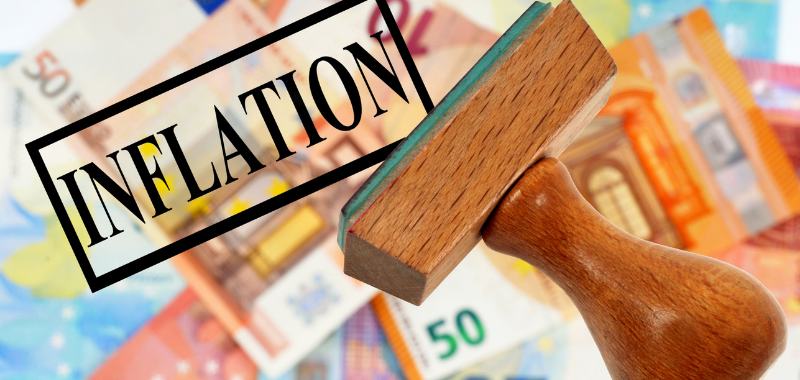Inflation is a measure of the rate of rising prices of goods and services in an economy. Inflation can occur when prices rise due to increases in production costs, such as raw materials and wages. A surge in demand for products and services can cause inflation as consumers are willing to pay more for the product. It is a critical and cyclical macro indicator that influences actions from all economic participants, be it central banks, government policymakers, producers, or consumers. At the very basic fundamental level, inflation also impacts returns that an investor earns on the investments he or she makes.
Let us look at how inflation impacts multiple asset classes.
Fixed Income:
Inflation impacts fixed-income investments the most due to its inverse relationship with interest rates. As inflation inches higher, investors expected returns also move higher to beat inflation. But as interest rates on debt instruments are fixed over their term, the prices of these instruments fall as investors sell the existing lower-yielding products and move into higher-yielding ones. So, in a rising inflation environment, fixed-rate debt investments stand to lose the most.
Equity:
When it comes to equities, inflation can be good or bad depending on the level of inflation, nature of inflation (transient or persistent), the external macro-environment, and each corporates’ sector exposure, balance sheet structure, and pricing power. But if the demand is suppressed due to weaker consumer sentiments, high unemployment, sector disruption, or any other reason, then corporates would find it difficult to pass on the raw material price rise to final product price hikes. This would lead to a contraction in profits and the consequent impact on stock prices.
Commodities:
Commodities are real, physical assets, and a strong hedge against inflation as their prices define the underlying inflation. Their prices are an indicator of inflation to come. Inflation is a weighted index of prices of different goods and services – raw materials (wholesale inflation) and final products (consumer inflation) – combined in a basket. The proportion of these items is determined by the respective country’s government agencies. So, commodities (basic resources, metals, energy, agricultural produce) tend to do very well under a rising inflation scenario and vice versa.
Gold:
The same relationship holds true for gold as well because it is also a precious metal – a commodity after all. Gold is the best inflation hedge as it tends to protect the value of your portfolio in times of rising inflation, and hence it is also called a ‘premium store of value.’ The other attributes of gold that make it a valuable strategic asset in investment portfolios are – return-generating ability over long periods, great diversifier due to its low correlation with other asset classes in both expansionary and recessionary periods leading to better risk-adjusted returns, liquid as other mainstream financial assets and no credit risk. Investors also look at gold as an ‘alternative currency’ or ‘currency of last resort,’, especially in countries where local currency is losing value.
Real Estate:
Property prices and rentals tend to rise when inflation rises as a property owner or landlord demands higher returns to offset rising input and consumption costs. Thus, real estate is also a physical asset that has a high correlation with inflation. REITs and Real Estate ETFs invest in a pool of real estate assets and are a better way to gain exposure to this asset class rather than investing in tangible physical land, residential, commercial, retail, or industrial property.
Inflation is a natural occurrence in the market economy. There are many ways to hedge against inflation; a disciplined investor can plan for inflation by investing in asset classes that outperform the market during inflationary climates.
Keeping inflation-hedged asset classes on your watch list—and then striking when you see inflation begin to take shape in a real, organic growth economy—can help your portfolio thrive when inflation hits.




